Understanding Quaker Parakeet Communication
Quaker parakeets, also known as monk parakeets, are highly intelligent birds known for their remarkable ability to mimic human speech and other sounds. Understanding how these birds communicate is crucial for effectively teaching them to talk. By delving into the intricacies of Quaker parakeet talking, you can embrace the importance of teaching your parakeet to communicate effectively.
Building Trust and Connection
Building a strong bond with your Quaker parakeet is the foundation for successful communication. Employ modern bonding techniques such as spending quality time together, offering favorite treats, and engaging in interactive play to strengthen your relationship. By fostering trust through positive reinforcement and interactive play, you create a nurturing environment for effective Quaker parakeet talking.

Creating an Ideal Training Environment
Creating an ideal training environment is essential for maximizing your Quaker parakeet talking potential. Utilize sensory enrichment by incorporating a variety of toys, perches, and textures into their environment. Additionally, consider incorporating technology such as interactive toys and puzzles to provide mental stimulation and engagement during training sessions.
Training Techniques for Quaker Parakeet Talking
Effective Training Strategies
1. Clicker Training: Clicker training is a highly effective method for teaching desired behaviors to Quaker parakeets. In clicker training, a small handheld device called a clicker is used to make a distinct clicking sound, which serves as a marker for the desired behavior.
For example, if you’re teaching your parakeet to say “hello,” you would wait until it makes a sound resembling “hello” and immediately click the clicker to mark the behavior.
Then, you would reward the parakeet with a treat. With consistent repetition, your parakeet will learn to associate the clicking sound with the desired behavior, making it more likely to repeat it in the future.

2. Target Training: Target training in Quaker parakeet talking training involves teaching your parakeet to touch a designated target, such as a small stick or ball, with its beak or foot. This technique is particularly useful for teaching your parakeet to move to specific locations or perform certain actions.
For example, if you want to teach your parakeet to step onto your hand, you can use target training by holding the target stick near your hand and rewarding your parakeet when it touches the stick.
Gradually, you can move the stick closer to your hand until your parakeet is comfortable stepping onto it without the target stick present.
3. Positive Reinforcement: Positive reinforcement involves rewarding your parakeet with treats, praise, or attention when it exhibits desired behaviors.
For instance, if you’re teaching your parakeet to mimic a specific word or sound, such as “good bird,” you would reward it with a treat or enthusiastic praise each time it successfully repeats the phrase.
Positive reinforcement helps strengthen the association between the behavior and the reward, making it more likely that your parakeet will continue to engage in the desired behavior.
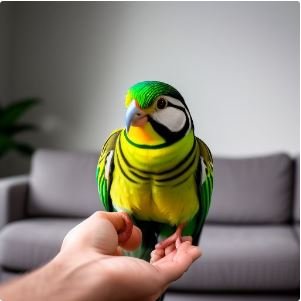
4. Repetition and Consistency: Consistency and repetition are key components of effective training. Consistently practicing training exercises helps reinforce desired behaviors and allows your parakeet to become more proficient over time.
For example, if you’re teaching your parakeet to say a new phrase, such as “I love you,” you would repeat the phrase multiple times during each training session. By practicing regularly and providing positive reinforcement for correct responses, you can help your parakeet develop its vocalization skills and expand its repertoire of words and sounds.
Advanced Vocalization Techniques
1. Speech Segmentation: Speech segmentation involves breaking down words or phrases into smaller, more manageable segments to facilitate learning for the parakeet.
For example, if you want to teach your parakeet the phrase “hello, how are you?”, you might start by breaking it down into individual sounds or syllables: “hel-lo, how, are, you?” By presenting the phrase in smaller segments, you make it easier for the parakeet to mimic and understand each component before putting them together into a complete phrase.
2. Variable Reinforcement: Variable reinforcement involves varying the timing and type of rewards given to the parakeet for vocalizing or repeating desired words or sounds. Instead of rewarding the bird with a treat every time it vocalizes, you might vary the rewards by occasionally offering a favorite toy, verbal praise, or a different type of treat.
This unpredictability keeps the parakeet engaged and motivated to continue vocalizing in hopes of receiving a reward, similar to how slot machines in casinos use variable reinforcement to keep players playing.
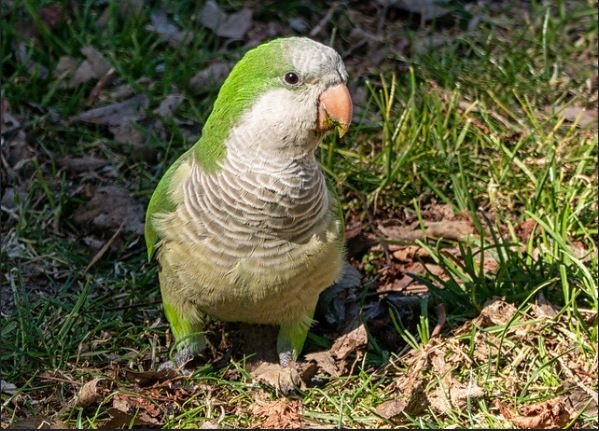
3. Word Association Technique: Word association involves associating specific words or phrases with actions, objects, or concepts to help the parakeet understand their meaning and context.
For example, you can teach your parakeet to say “good morning” whenever you open its cage in the morning by consistently saying the phrase while performing the action. Over time, the parakeet learns to associate the phrase with the action of you opening its cage and will begin to say it on its own when it anticipates the action.
4. Mirror Training: Mirror training involves using a mirror to encourage vocal mimicry in the parakeet. By placing a mirror within the bird’s environment, you provide visual feedback that stimulates the bird’s natural instinct to communicate and socialize.
For example, if you say a word or phrase while the parakeet is looking at itself in the mirror, it may be more likely to mimic the sound in response to seeing its own reflection. Mirror training can be especially effective for shy or reserved parakeets who may be more comfortable vocalizing in the presence of a mirror.
Cognitive Enrichment Methods
These are Quaker parakeet talking techniques used to stimulate the parakeet’s cognitive abilities and mental agility, promoting learning and problem-solving skills. These methods go beyond basic Quaker parakeet talking training exercises to provide opportunities for the bird to engage in complex tasks and activities that challenge its intellect.
1. Puzzle Training: Puzzle training involves introducing the parakeet to various types of puzzle toys designed to challenge its problem-solving abilities.
For example, a puzzle toy may require the bird to manipulate objects to access hidden treats or navigate through obstacles to reach a reward. By encouraging the parakeet to use its natural curiosity and intelligence to solve these puzzles, the trainer helps strengthen its cognitive skills and mental flexibility.
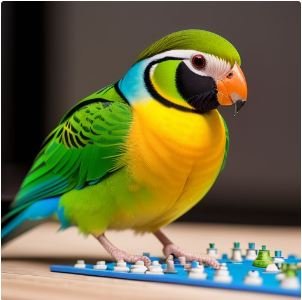
2. Foraging Activities: Foraging activities simulate the natural behavior of searching for food in the wild, providing the parakeet with opportunities to engage in mental and physical stimulation.
For example, the trainer can hide treats or food items in different locations around the bird’s environment, encouraging it to explore and problem-solve to find them. By promoting natural foraging behaviors, foraging activities help keep the parakeet mentally stimulated and physically active.
3. Phrase Expansion: Phrase expansion involves gradually increasing the complexity of the phrases or words the parakeet is taught to mimic.
For example, starting with simple words like “hello” or “goodbye” and gradually introducing longer phrases or sentences. By challenging the parakeet to learn and reproduce more complex vocalizations, the trainer helps develop its language skills and communication abilities.
4. Contextual Learning: Contextual learning involves teaching phrases or words within relevant contexts to help the parakeet understand their meaning and usage.
For example, associating the word “treat” with the action of receiving a treat or the word “play” with the activity of engaging in interactive play. By providing context for the words or phrases it learns, the parakeet can better understand and respond to them in real-life situations.
Tailored Approaches for Quaker Parakeets talking.
Tailoring your training approach to suit the individual needs and preferences of your Quaker parakeet talking is essential for success. Every bird is unique, so it’s important to experiment with different techniques and observe your parakeet’s responses to determine what works best for them.
1. Mirror Play: Mirror play involves introducing a mirror into your parakeet’s environment to encourage vocalization and socialization. Many birds enjoy interacting with their reflection and may be more inclined to mimic sounds or words they hear themselves saying. By placing a mirror near your parakeet’s perch or play area, you can provide them with a stimulating and engaging activity that promotes vocal mimicry.
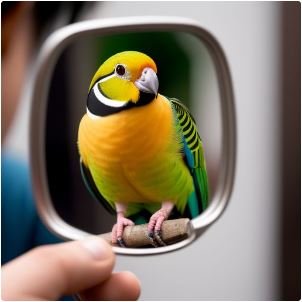
2. Social Learning Networks: Introducing your parakeet to other talking birds can provide valuable opportunities for peer learning and socialization. Birds are highly social creatures and often learn by observing and interacting with others of their species.
By allowing your parakeet to interact with other talking birds in a controlled environment, such as a bird club or socialization group, you can expose them to new vocalizations and encourage them to mimic their feathered friends.
3. Social Learning Method: The social learning method involves encouraging learning through observation of other birds. By exposing your parakeet to recordings or videos of other talking birds, you can provide them with examples to emulate.
Play recordings of phrases or words you want your parakeet to learn and observe their reaction. Some birds may be more inclined to mimic sounds they hear from other birds, making this a valuable training technique for teaching new vocalizations.
4. Interactive Play Training: Incorporating interactive play sessions into your training routine can make learning fun and engaging for your parakeet. Use toys, puzzles, and games that encourage vocalization and mimicry, such as talking toys or interactive bird games. By combining play with training, you can reinforce positive behaviors and encourage your parakeet to communicate in a playful and interactive way.

Tailoring your training approach to suit your parakeet’s individual needs and preferences can help maximize their learning potential and foster a strong bond between you and your feathered friend. Experiment with different techniques and be patient as you discover what works best for your bird.
Personalized Training Approaches
Tailor your Quaker parakeet talking training methods to accommodate your parakeet’s individual learning style and preferences. Experiment with different techniques and observe your bird’s responses to determine what works best for them.
Overcoming Training Challenges
Quaker parakeet talking training can present various challenges along the way, but with patience, creativity, and persistence, these obstacles can be overcome. Here are some practical strategies and examples to help you address common training challenges:
Resilience-building Exercises: Just like humans, parakeets can experience setbacks and frustrations during training. Resilience-building exercises aim to help them bounce back from these challenges and stay motivated to learn.
For example, if your parakeet becomes frustrated when learning a new trick, you can take a step back and practice something they already know well to boost their confidence before returning to the more challenging task.
Positive Visualization Techniques: Visualization techniques involve mentally rehearsing successful training sessions and envisioning the desired outcomes. For instance, if you’re working on teaching your parakeet a new word, visualize them saying it clearly and confidently while offering a reward. This positive visualization can help you maintain focus and motivation during training sessions, even when progress seems slow.
Example: Let’s say you’re teaching your parakeet to say the word “hello.” If they’re struggling to pronounce it correctly, you can visualize them saying it fluently while imagining the excitement and pride you’ll feel when they finally get it right. This positive imagery can help you stay patient and persistent, even when faced with challenges.

Practice mindfulness and relaxation techniques: Just as stress can hinder human learning, it can also impede a parakeet’s progress during training. By practicing mindfulness and relaxation techniques, such as deep breathing or gentle massage, you can help your parakeet feel calm and focused during training sessions. This can be especially helpful when introducing new and potentially stressful tasks, such as learning to mimic a new sound or behavior.
Example: Before beginning a Quaker parakeet talking session, take a few moments to sit quietly with your parakeet and engage in some calming activities, such as softly singing or gently stroking their feathers. This can help create a positive and relaxed atmosphere, making it easier for your parakeet to focus and learn.
By incorporating these resilience-building and relaxation techniques into your training routine, you can help your Quaker parakeet overcome challenges and reach their full potential as a talkative and engaging companion. Remember to be patient, consistent, and compassionate throughout the training process, and celebrate each small victory along the way.
Celebrating Progress and Achievements
Celebrate your Quaker parakeet talking progress and achievements along the way. Establish a reward system to celebrate milestones and encourage continued learning. Document their progress with videos and recordings to track improvement over time and share their accomplishments with others.
Understanding Vocalization Patterns
Analyze your parakeet’s vocalization patterns using spectrogram analysis tools for deeper insight into their communication. Experiment with speech recognition software to assess accuracy and fluency, and tailor your training approach accordingly.

Integration into Daily Life
Integrate Quaker parakeet talking training sessions seamlessly into your daily routine to promote consistency and habit formation. Incorporate language learning into everyday interactions and activities to reinforce learning and encourage practical application.
Conclusion:
In conclusion, mastering Quaker parakeet talking requires patience, dedication, and a deep understanding of your bird’s communication and learning needs. By implementing innovative training strategies and techniques, you can effectively teach your parakeet to communicate and enrich both of your lives.
FAQs: Your Guide to Quaker Parakeet Talking
How long does it take to train a Quaker parakeet to talk?
Quaker parakeet talking Training duration varies, but with consistent practice, it can take several weeks to several months for a Quaker parakeet to learn to talk.
Are Quaker parakeets prone to certain health issues related to vocalization?
While excessive vocalization itself isn’t a health issue, it’s essential to monitor for signs of respiratory problems or vocal strain, which can occur if the bird is overexerting itself.
Can older Quaker parakeets learn to talk, or is it best to start training when they’re young?
Older parakeets can learn to talk, but it may take more time and patience. Starting training when they’re young generally yields better results due to their increased ability to learn new skills.
What are some common mistakes to avoid for Quaker parakeet talking?
Avoiding inconsistency in Quaker parakeet talking training, expecting too much too soon, and not providing enough positive reinforcement are common mistakes. Additionally, forcing the bird to talk or using negative reinforcement can hinder progress.
Are there any specific words or phrases that Quaker parakeets tend to learn more easily?
Quaker parakeets often pick up short, simple words or phrases with repetitive sounds more easily, such as “hello,” “goodbye,” or their own name. Consistency and patience in teaching these phrases are key to success.
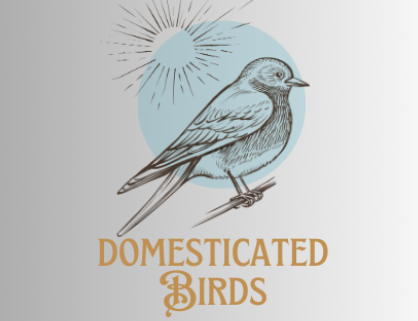

1 thought on “Chatter to Conversation: 16 Quaker Parakeet Talking Techniques”